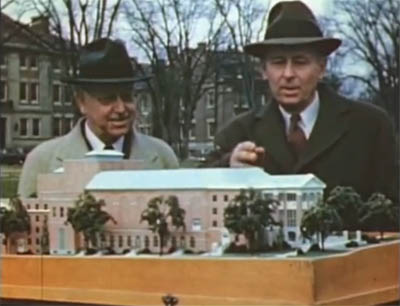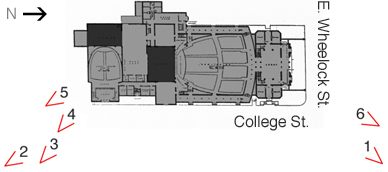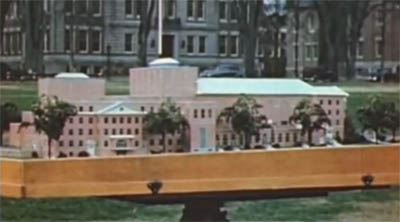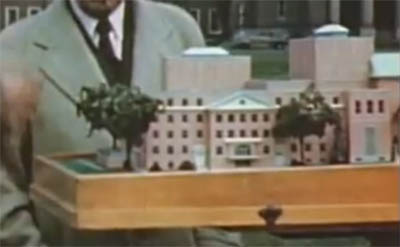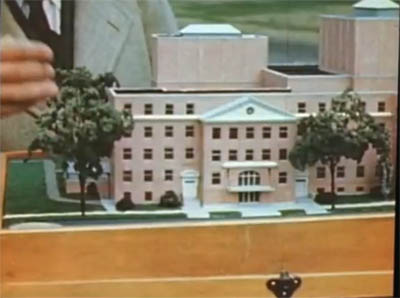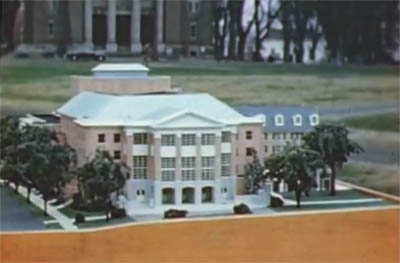Although Dartmouth seems to take some pride in having a campus without any gates, it could still benefit from the exercise of defining a campus boundary and identifying the major entrances to the academic precinct. A sketch from several years ago:
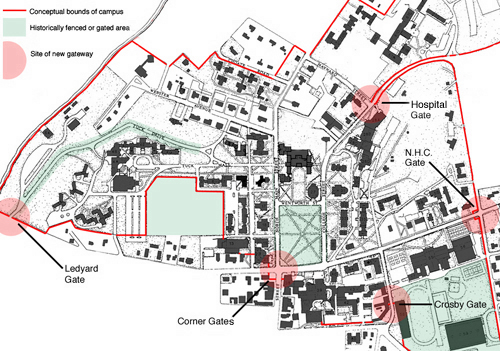
This is all fairly obvious, but it does not seem to receive much attention in writing. The greatest coherence (and the greatest support for the idea of walkability) seems to be achieved by reducing the number of gates and pulling them inward.
The only site where two gates would stand close to each other is at the southwest corner of the Green. Pulling the gates toward the center would allow them to share a single gatepost on the Green itself, but that would detract significantly from the Green and would interfere with the tree on the corner. Here, the gates should spring from the Inn and C&G (south gate) and from Collis and C&G (west gate):
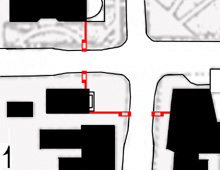
Again, this is not a proposal, and Dartmouth does not need any more* gates.
However, if this sort of project were built, and if it were differentiated from its direct ancestor, Charles McKim’s wonderful gates at Harvard, the builders couldn’t go wrong with a set massive rusticated granite piers supporting a timber truss. This would refer to the Connecticut river bridges, especially Rufus Graves’s arched truss of the late eighteenth century.
——
* Tuck Drive was built with a brick gateway at each end. The lower example survives. More recently, Scully-Fahey Field was erected with a large freestanding gateway.

